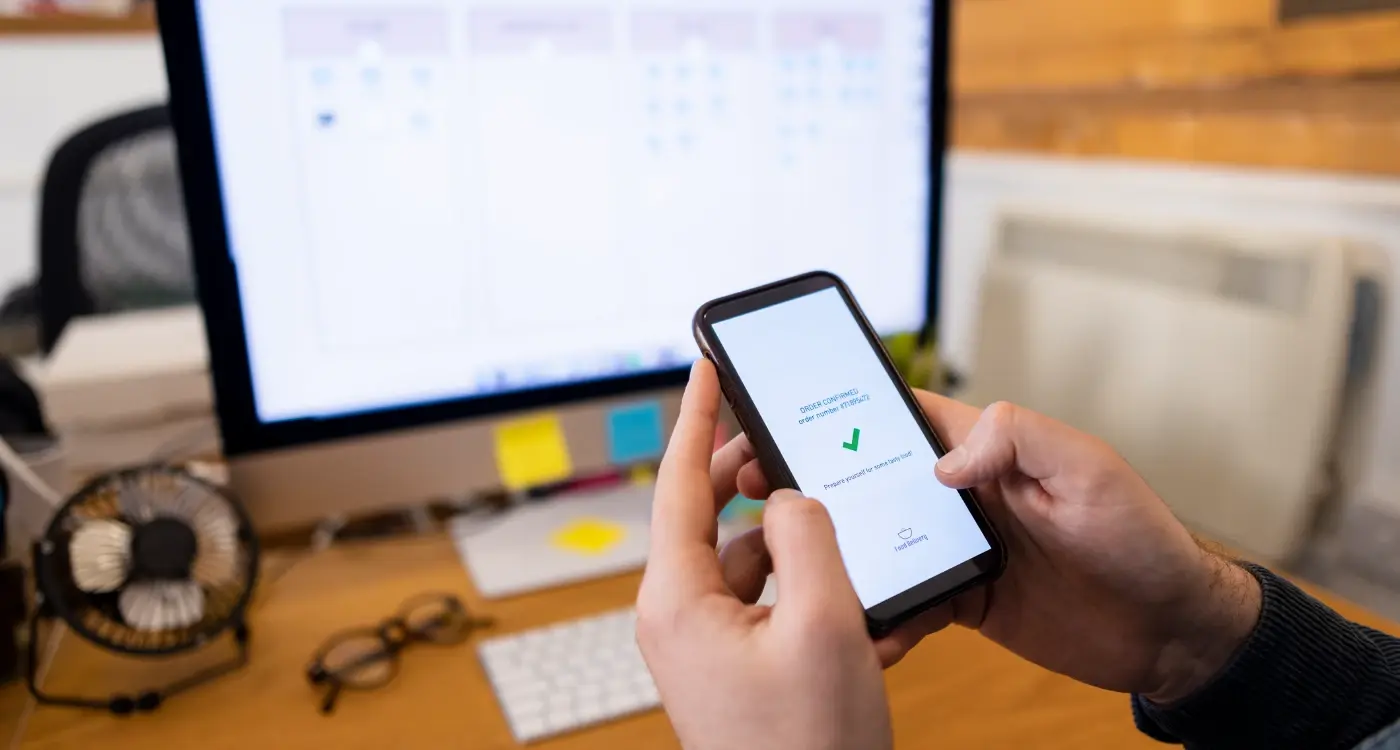What Questions Should I Ask Users When Collecting Feedback?
A popular fitness mobile app launches with thousands of downloads in its first month. Users seem engaged at first, but within weeks the retention rates plummet and reviews start turning negative. The development team scratches their heads—the app works perfectly, looks great, and does everything they promised. What went wrong? They never asked users what they actually wanted or how they felt about using it.
Getting feedback from your mobile app users isn't just nice to have—it's absolutely critical for survival in today's competitive market. But here's the thing: asking the right questions is an art form that most developers get completely wrong. You can't just throw a generic survey at people and expect meaningful insights.
The quality of your questions determines the quality of your answers, and ultimately, the success of your mobile app
This guide will show you exactly which questions actually work when collecting user feedback. We'll cover everything from user research basics to advanced survey design techniques that get real, actionable responses. Whether you're launching your first app or trying to improve an existing one, the right feedback questions can transform how users experience your product—and whether they stick around long enough to recommend it to others.
Why User Feedback Questions Matter for Your Mobile App
Most app developers think they know what users want—and most of the time, they're wrong. I've watched countless apps launch with features that nobody asked for whilst missing the ones people actually need. The difference between a successful app and one that gets deleted after a few uses often comes down to understanding your users properly.
User feedback questions aren't just nice to have; they're your direct line to understanding what's really happening when people use your app. Without them, you're basically flying blind, making decisions based on assumptions rather than real data. And assumptions, as I've learnt the hard way, can be expensive mistakes.
Feedback Questions Drive Smart Decisions
When you ask the right questions, you get insights that can completely change how you approach your app development. Maybe you think your checkout process is simple, but users find it confusing. Perhaps you've spent months perfecting a feature that nobody actually uses. These aren't problems you can spot just by looking at download numbers or star ratings—you need to dig deeper with proper feedback collection methods.
The apps that succeed long-term are the ones that listen to their users and adapt accordingly. It's that simple, really.
Types of Questions That Get Results
When it comes to mobile app user research, not all questions are created equal. Some will give you gold—actionable insights that transform your app. Others? Well, they're about as useful as a chocolate teapot.
The secret lies in understanding which question types actually work. Open-ended questions like "What frustrated you most during sign-up?" unlock detailed feedback you'd never get from a simple yes/no answer. Meanwhile, rating scales help you measure satisfaction levels across different app features—perfect for spotting patterns in your user experience.
The Four Question Types That Actually Matter
- Behavioural questions – What did users actually do in your app?
- Attitudinal questions – How do they feel about specific features?
- Comparative questions – How does your app stack up against competitors?
- Predictive questions – What would make them use your app more often?
Each type serves a different purpose in your survey design strategy. Behavioural questions reveal usage patterns; attitudinal ones uncover emotional responses that drive user retention.
Mix question types within the same survey—but keep it under 10 questions total. Users will abandon longer surveys faster than you can say "user research".
The key is matching your question type to what you're actually trying to learn. Want to improve onboarding? Focus on behavioural questions. Looking to boost engagement? Predictive questions are your best friend.
Questions About User Experience and Interface Design
Getting the user experience right is what separates good apps from great ones—and let me tell you, users will abandon your app faster than you can say "loading screen" if the experience isn't up to scratch. The questions you ask about UX and interface design need to dig deep into how people actually interact with your app, not just what they think about it.
Start with the basics: "How easy was it to complete your main task?" This tells you if your core functionality is working properly. Then get more specific with questions like "Which part of the app felt confusing?" or "Where did you get stuck?" These pinpoint exact problem areas that need fixing.
Questions That Reveal Interface Problems
Don't just ask if something looks good—ask if it works well. "Did you find what you were looking for quickly?" reveals navigation issues, while "Which buttons or links weren't clear?" highlights interface problems you might have missed.
- How intuitive did the navigation feel?
- Were there too many steps to complete your task?
- Did any screens feel cluttered or overwhelming?
- What would you change about the layout?
- Did the app respond quickly enough to your actions?
The magic happens when you combine these direct questions with follow-up prompts like "Can you show me exactly where that happened?" This gives you actionable insights rather than vague complaints.
Understanding User Behaviour Through Smart Questions
Getting inside your users' heads isn't about mind reading—it's about asking the right questions at the right time. When you're doing user research for your mobile app, understanding behaviour patterns can make or break your design decisions. The trick is knowing what to ask and when to ask it.
Start with questions that reveal how people actually use your app, not how they think they use it. "Walk me through the last time you opened our app" works better than "How often do you use our app?" because people are terrible at estimating their own habits. You want the real story, not the polished version they think sounds better.
Questions That Reveal True Usage Patterns
Focus on specific moments rather than general opinions. "What were you trying to accomplish when you got stuck on that screen?" tells you more about user behaviour than asking if they like the interface design. These contextual questions help you spot where users struggle without them having to diagnose the problem themselves.
The best insights come from understanding the gap between what users say they do and what they actually do
Survey design becomes much more effective when you ask about real situations. Questions like "What made you choose our app over the others you tried?" or "What almost made you delete our app?" get to the heart of user motivations and pain points that drive actual behaviour changes.
Questions That Uncover Feature Gaps and Opportunities
Finding out what your app is missing can feel like detective work—and honestly, that's exactly what it is. The best way to discover these gaps is by asking users direct questions about their needs and frustrations. I've found that people are surprisingly honest about what they wish your app could do differently.
Start with open-ended questions that give users space to think. "What would make this app more useful for you?" is a simple question that often reveals surprising insights. You might discover that users are trying to accomplish something completely different from what you originally intended.
Questions That Reveal Missing Features
These specific questions work well for uncovering opportunities:
- What do you do right before and after using our app?
- Which other apps do you use alongside ours?
- What tasks do you still need to do outside the app?
- If you could add one button to the main screen, what would it do?
- What would convince you to use this app daily?
Spotting Integration Opportunities
Pay attention when users mention switching between multiple apps to complete a single task. That's your biggest clue for new features. If someone says they use your app then immediately open their calendar or email, you've found a potential integration opportunity that could make your app stickier and more valuable.
Common Mistakes When Asking Users for Feedback
After years of working with mobile app developers, I've noticed the same survey design mistakes crop up again and again. The biggest one? Asking leading questions that push users towards the answer you want to hear. Questions like "How much do you love our new feature?" already assume users love it—and that's not fair on them or helpful for your user research.
Another common trap is making surveys too long. Users will abandon anything that takes more than a few minutes to complete. Keep it short and sweet; you'll get better response rates and more honest answers. I've seen developers create 20-question surveys when 5 would do the job perfectly well.
Questions That Don't Help Your Mobile App
- Yes/no questions that don't give you depth
- Technical jargon that confuses users
- Multiple questions crammed into one
- Vague questions like "What do you think?"
- Questions about features users haven't used yet
Time your feedback requests carefully. Don't interrupt users mid-task or ask for opinions about features they've only just discovered.
Remember, bad user research is worse than no user research at all. If you're collecting feedback that's biased or unclear, you'll make decisions based on dodgy data—and that rarely ends well for anyone involved. When you do receive valuable feedback, knowing which insights to prioritise and act on first becomes crucial for your app's success.
Conclusion
Getting feedback from users isn't just about asking questions—it's about asking the right questions at the right time. The difference between a successful app and one that gets deleted after a week often comes down to how well you understand your users' needs, frustrations, and desires.
Throughout this guide, we've covered the types of questions that actually get results; from understanding user experience issues to uncovering those hidden feature gaps that could transform your app. We've also looked at the common mistakes that trip up even experienced developers—because let's face it, we've all been there!
The key is to keep your questions simple, specific, and focused on actionable insights. Don't overwhelm users with lengthy surveys or vague questions that lead nowhere. Instead, think strategically about what you need to know and craft questions that give you clear, usable answers.
Start small with just a few well-chosen questions and build from there. Your users will appreciate the respect for their time, and you'll get better quality feedback as a result. Remember, every piece of feedback is a chance to make your app better—and that's what separates good apps from great ones.
Share this
Subscribe To Our Learning Centre
You May Also Like
These Related Guides

What's The Best Way To Collect Feedback From App Users?

What Are The Best Tools For Remote User Testing Of Mobile Apps?



